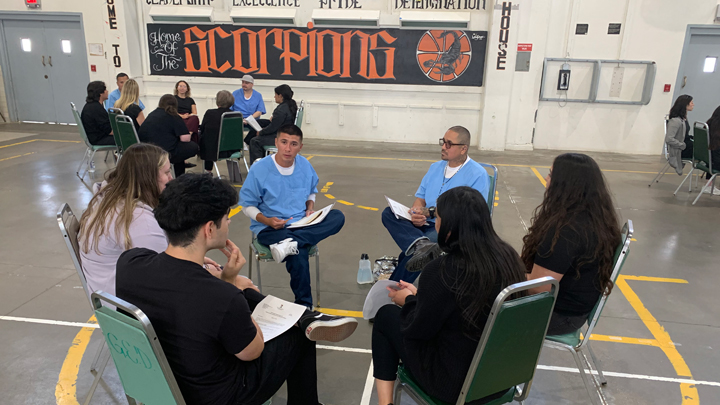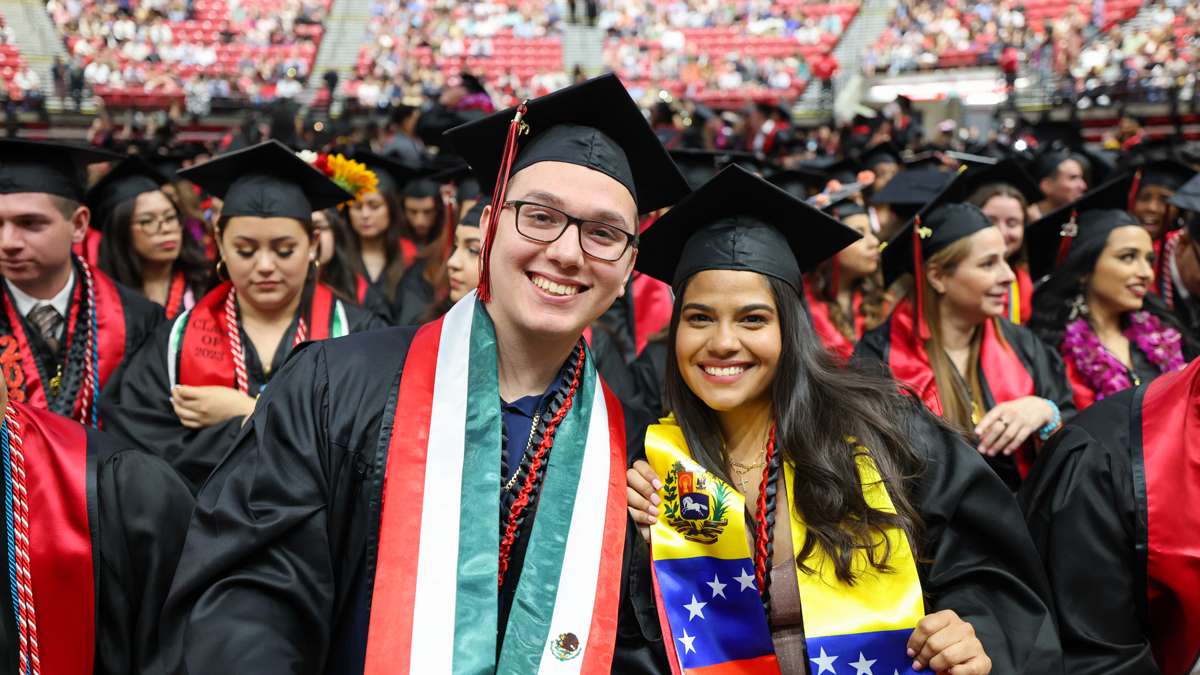Unlocking Potential: San Diego State University Students Travel to Centinela State Prison for Interactive Dialogue

IMPERIAL, Calif. – Criminal Justice students got an up-close look at an obscure leg of the judicial system on April 26, 2024, when they traveled to Centinela State Prison for a dialogue with incarcerated and fellow San Diego State University students enrolled in the Valuing Incarcerated Students Through Academia (VISTA) program. The purpose of the visit was to allow students to exchange individual perspectives, experiences, and motivations for higher education.
VISTA Program Director Annie Buckley and prison administrators helped produce the three-hour long event, where students were separated into six groups of five –two VISTA students paired with three outside students –and given sets of questions that delved into each group’s experiences as an SDSU student.
“This meeting gave me a window into what it’s like to be a college student in society,” SDSU VISTA student Ian Ellis said. “I learned that whether incarcerated or living on campus, our educational experiences are relative.”
Criminal Justice students gave VISTA students insight into their day-to-day lives, how they utilize growing technology for classes, and the challenges they face while maintaining work and courses. One student revealed her desire to become a district attorney before taking a Criminal Justice course that highlighted the inequity in the judicial system. “I learned how arrests, convictions, and sentencing were disproportionately administered,” Criminal Justice student Taylor said. She now hopes to work in a capacity that helps rebuild an imperfect system.
“My students took away so much from the experience,” SDSU Criminal Justice professor
Tereza Trejbalova said. “None of my students have ever been inside a prison and were worried that VISTA students would not be interested in talking with them, would be standoffish, or that the interaction would be awkward.”
After the dialogue, Trejbalova offered a moving observation.
“The event proved them wrong,” Trejbalova said. “They were all just taken aback by how comfortable they felt talking with VISTA students and how meaningful it was for both parties.” “For most, if not all, of my students, this experience solidified the idea of humanity in prison.”
VISTA students took the opportunity to relate their experiences as incarcerated students, what their educational experiences were prior to incarceration, and how they overcome challenging limitations with technology – VISTA students possess laptops with
blocked internet access.
Both groups of students face unique challenges on their degree path. VISTA students have to negotiate earning an education in prison and the barriers that accompany it while balancing work, programming, and the prison environment.
Campus students, on the other hand, face their own set of challenges. Main campus students also have to juggle work, extra circular activities, and the many
distractions of society while working towards their degree.
Campus and incarcerated students also utilize the Canvas application, which allows VISTA students to prepare for growing technology in society by familiarizing them with virtual submissions and giving them an opportunity to workshop amongst their cohort.
“In a way, this went beyond just connecting and chatting with other people who are not usually around; it was about belonging to a larger student body and student camaraderie,” Trejbalova said. “My views now account for the need to involve incarcerated students with the campus as much as possible and make it a movement in higher education in prison.”
The symposium gave both sets of students a glimpse into the lives of their counterparts and helped bridge the gap between students completing their educational careers in society, and those doing the work of renewing themselves through education
while incarcerated.
Silas M. Johnson is an Interdisciplinary bachelor's degree student at San Diego State University
through the VISTA cohort at Centinela State Prison and the author of “A Rivers Light In A Barren
Tunnel… Elegies In Effigy.” He is currently writing a horror novel.
.

